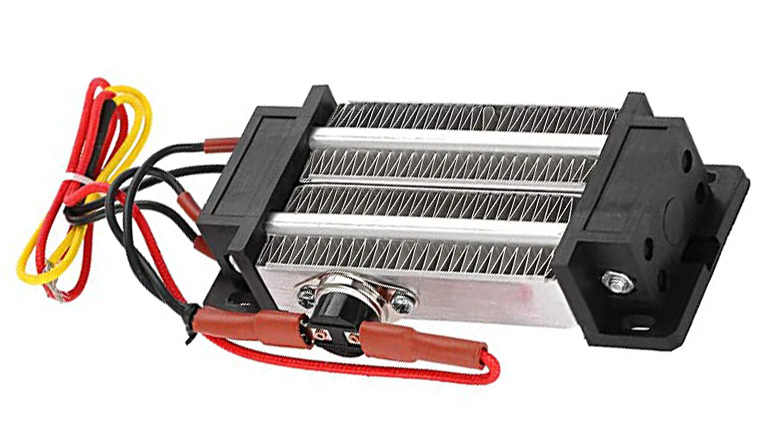How to Fix Your Nissan CVT Transmission: A Step-by-Step Guide
How to Fix Your Nissan CVT Transmission: A Step-by-Step Guide the continuously variable transmission (CVT) in your Nissan provides a smooth driving experience, offering seamless acceleration and improved fuel efficiency. However, as with any vehicle, it can encounter problems over time. When issues arise with your Nissan CVT, timely and effective Nissan CVT transmission repair is crucial to avoid costly replacements or extensive damage. This guide will walk you through the steps you can take to address common issues with your Nissan CVT transmission and ensure it continues to perform at its best.

Common Symptoms of a Faulty Nissan CVT
Before diving into the steps for Nissan CVT transmission repair, it’s important to first identify the signs that your CVT is malfunctioning. Some of the most common symptoms of a faulty CVT include:
- Shuddering or Jerky Movements: A common symptom that feels like the car is shaking or vibrating when accelerating.
- Delayed or Sluggish Acceleration: Noticeable hesitation when pressing the gas pedal, often accompanied by slow acceleration.
- Transmission Slipping: The engine revs higher without a corresponding increase in vehicle speed, suggesting that the CVT is not engaging properly.
- Check Engine Light: A warning indicator that often appears when there are problems with the transmission system.
If any of these signs sound familiar, it’s time to start the Nissan CVT transmission repair process.
Step 1: Inspect the Transmission Fluid
Transmission fluid is the lifeblood of your CVT, providing lubrication to moving parts and helping to regulate temperature. Low or dirty fluid can lead to a range of issues, from shuddering to overheating. The first step in any Nissan CVT transmission repair is to check the fluid level and condition.
How to Check the Fluid
- Locate the Transmission Dipstick: Depending on your model, your Nissan may have a transmission dipstick, or it may require a more complex inspection process. Refer to your owner’s manual for the exact procedure.
- Check Fluid Levels: With the engine running and the car in park, remove the dipstick and wipe it clean with a lint-free cloth. Reinsert it, then pull it out again to check the fluid level.
- Inspect Fluid Condition: Transmission fluid should be a reddish color and have a clean, clear consistency. If the fluid is dark brown, has a burnt smell, or contains particles, it’s time to change it.
Solution
If the fluid level is low or the fluid is in poor condition, replace it with the appropriate CVT fluid for your Nissan. Make sure to use the manufacturer-approved fluid to avoid damaging the transmission. If the fluid appears contaminated, a complete fluid flush may be necessary to ensure that all debris is removed.
Step 2: Reset the Transmission Control Module (TCM)
The Transmission Control Module (TCM) is responsible for managing the shifting patterns and overall performance of the CVT. A malfunctioning TCM can cause shifting issues, delayed acceleration, or even transmission slipping. In many cases, a simple reset of the TCM can help restore proper function.
How to Reset the TCM
- Turn off the Engine: Ensure that the engine is completely turned off before proceeding.
- Disconnect the Battery: Remove the negative terminal of the battery to reset the vehicle’s computer system.
- Wait 10–15 Minutes: Allow the system to fully reset.
- Reconnect the Battery: Reconnect the negative terminal of the battery, ensuring the connection is secure.
- Start the Engine: Start the car and test the transmission to see if the problem persists.
Solution
If resetting the TCM resolves the issue, the transmission should shift smoothly once again. If the problem continues, further diagnostics may be necessary, as the TCM itself may need to be reprogrammed or replaced.
Step 3: Inspect the CVT Belt or Pulleys
One of the critical components of a CVT is its belt and pulleys. These parts work together to provide the continuous range of gears needed for smooth driving. Over time, the belt or pulleys may wear down, causing the transmission to slip, shudder, or hesitate. If you’ve already checked the fluid and reset the TCM but still experience issues, it’s time to inspect the belt and pulleys.
How to Inspect the Belt and Pulleys
- Raise the Vehicle: Use a jack to lift the front end of the car. Ensure the vehicle is securely supported by jack stands before proceeding.
- Remove the Transmission Pan: You may need to remove the transmission pan or access panel to reach the CVT belt and pulleys. This will require removing several bolts.
- Inspect the Belt: Look for any signs of wear, cracking, or fraying on the belt. If the belt appears damaged, it will need to be replaced.
- Check the Pulleys: Inspect the pulleys for damage, misalignment, or debris. Pulleys that are out of alignment or damaged may cause slipping or poor performance.
Solution
If the belt is worn or damaged, it will need to be replaced. This is a more advanced repair that may require professional help, as replacing the CVT belt can be complex. Similarly, if the pulleys are worn or misaligned, they will need to be repaired or replaced to restore proper function.
Step 4: Address Overheating Issues
Overheating is a common issue with CVTs, and it can cause significant damage if left unaddressed. Overheating may be caused by low fluid levels, a clogged transmission cooler, or an issue with the radiator. If you notice that the transmission is overheating or the temperature gauge is rising, it’s essential to address the issue immediately.
How to Fix Overheating Issues
- Check the Fluid Levels: Low fluid levels are a common cause of overheating. Ensure the fluid is at the correct level and in good condition.
- Inspect the Transmission Cooler: The transmission cooler is responsible for keeping the transmission fluid at the proper temperature. If the cooler is clogged or malfunctioning, it will cause overheating. Check the cooler for debris or blockages, and clean or replace it as necessary.
- Examine the Radiator: If the radiator is not functioning properly, it can affect the transmission’s cooling system. Make sure the radiator is in good condition and not leaking.
Solution
If overheating persists despite addressing fluid levels and the transmission cooler, it may be necessary to replace the cooler or perform a more thorough inspection of the entire cooling system. In some cases, the radiator may need to be replaced to prevent further overheating.
Step 5: Professional Diagnosis and Repair
If the steps outlined above do not resolve your Nissan CVT transmission repair issues, it’s time to seek professional help. There are many internal components within a CVT that can fail, and diagnosing and repairing these issues requires specialized knowledge and equipment.
When to Seek Professional Help
- If the transmission is slipping or failing to engage properly.
- If you hear unusual noises coming from the transmission.
- If the vehicle continues to experience delayed acceleration or rough shifting.
- If the TCM is faulty or needs reprogramming.
Solution
A professional technician will have the tools necessary to diagnose and fix any internal transmission issues. They can perform advanced diagnostics, including scanning for error codes, performing a transmission fluid pressure test, or even disassembling the CVT to replace worn parts. In some cases, they may recommend a complete transmission rebuild or replacement if the damage is severe.
The Nissan CVT transmission repair process can be a manageable task if you take the right steps at the right time. Whether you’re dealing with low transmission fluid, a faulty TCM, or worn-out components like the belt or pulleys, addressing the issue early on can prevent more significant damage and extend the lifespan of your CVT.
Regular maintenance, such as checking the fluid and keeping an eye out for warning signs, is essential to maintaining the health of your transmission. However, if the issue persists, it’s crucial to seek professional assistance to avoid more costly repairs in the future.
By following the steps outlined in this guide, you can address common Nissan CVT transmission repair issues and keep your vehicle running smoothly for years to come.







